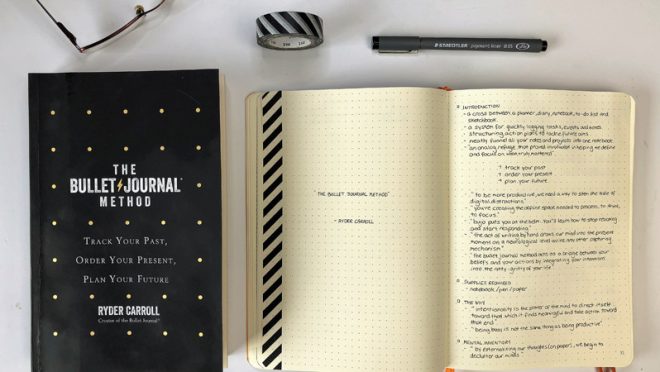The understated perks of journaling
The understated perks of journaling

Ilhamul Azam
According to a 2020 Nature article, a typical human brain deals with more than 6,000 thoughts per day, meaning our minds handle enough content to produce a thick book every single day.
However, unlike a book, these thoughts are usually incoherent. As we have to deal with intrusive thoughts, we often struggle with priorities and choices. And we may end up prioritising our focus on the wrong things instead of what’s important. Surprisingly, an old-school method like journaling can help us bring meaningful change in such cases.
Why write in a notebook?
When we intend to make a good decision, we have to rely on mindfulness: the process of becoming fully aware of what is in front of us. This helps us to answer questions like who we are, what we want, and why we are doing what we are doing.
The act of writing by hand works better than any other mechanism on a neurological level. It enhances our engagement with information, strengthens our associative thinking and therefore, helps us produce innovative solutions and insights.
Holding all of our thoughts together in our minds might feel overwhelming. They can easily disappear back into the depths of our subconscious. By externalising our thoughts and writing them down, we can declutter our minds. We create a mental inventory of choices we have made so far and will make in the future. We examine them in the daylight. It’s the initial step to reclaiming control over our lives.
Using an analogue tool like a notebook is crucial. According to a study, we’re left with approximately six hours of non-screen time per day. Infinity Pools, a force that describes the endless distraction in our era, is at its highest. We are headed towards rapidly decreasing our daily allocation of stopping to think. Sitting on a desk with our notebook gives us a distraction-free space. We are forced to go offline.
The therapeutic nature of journaling
Expressive writing has been an amazing aid for processing painful experiences. Journaling is a powerful therapeutic tool while treating people suffering from trauma and mental illness.
Cognitive behavioural therapy (CBT) uses scripts to treat people who obsess over intrusive thoughts. Writing on a script about distressing thoughts over and over again has been proven to make the thought lose its death grip on the person’s mind and grant a much-needed space.
Getting to know who you are
Journaling gives us an amazing opportunity to dive deep into our consciousness, personality, and perception. Witnessing and exploring traits of yourself that till now were merely in your subconscious.
It’s almost like reading between the lines. You can learn from your journal what you are fascinated about, what you inherently gravitate toward, and what you struggle with. Reading your journal can reveal what things are precious to you, what holds your attention and also how you think about a problem. By reviewing these, you can make meaningful progress towards the person you aspire to be in the future.
The Rubber-Ducking method
We are vulnerable to losing our objectivity when we act impulsively. In the book ‘The Pragmatic Programmer’, by Andrew Hunt and David Thomas, the authors tell the story of a developer who solves flaws in his code by explaining it to a rubber duck.
While explaining a situation in detail to someone, and for this matter to something, we’re forced to assess our perspective. We are involuntarily left with an opportunity to perceive things in a more careful and organised manner. If no one’s around to listen, you can try writing it out in your journal and entering mindfulness. By communicating the problem in such a way, you may get to the solution.
Bad Handwriting
Are you the kind of person who thought keeping journals was a thing for people with artistic ability? Do you wind up having an attack over your uniquely bad handwriting?
But it doesn’t matter if you can hardly make your journal pretty. You can look at your notebook as a part of your imperfections or as a statement of your courage and effort to change. Either way, those clumsy, crooked letters bear the picture of someone trying to make progress. And that is undoubtedly beautiful.
Ilhamul Azam is a high school senior. You can reach him at [email protected]
Source: Carroll, Ryder. “The Bullet Journal Method.” Track the Past, Order the Present, Design the Future, Portfolio, 2018.


